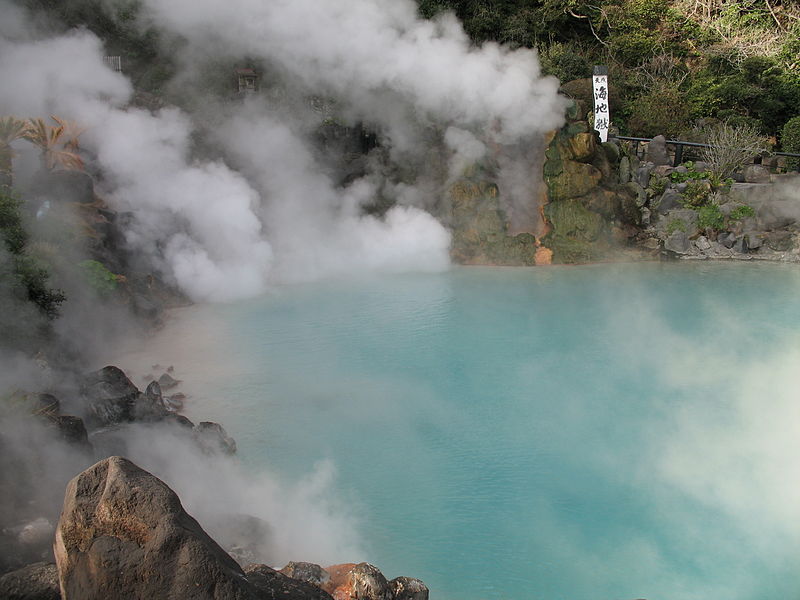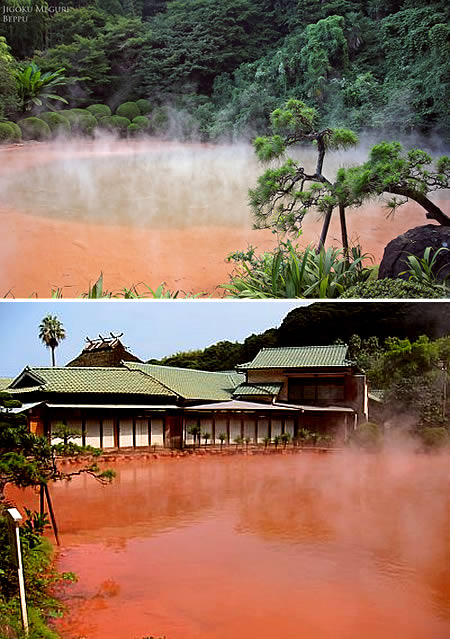The Eight Hells of Beppu, Japan

The country of
The springs come in many colors and compositions. Some are boiling mud, while others steam up from colorful pools. Their names, and subsequent descriptions, are as follows:
- Umi-Jogoku (Sea Hell) - So named because of its bright blue water and relatively large size.
- Oniishibozu-Jogoku (Shaven Monk’s Head Hell) - The “shaven head” is named because of the appearance of the boiling mud as it breaks the surface.
- Yama-Jigoku (Mountain Hell) - This spring also contains a small zoo, featuring monkeys, a hippo and an elephant.
- Kamado-Jigou (Boiling Hell) - This is a collection of multicolored, steaming springs.
- Oniyama-Jigoku (Demon Mountain Hell) - This spring is home to many crocodiles that use the area as a breeding ground.
- Shiraike-Jigoku (White Pond Hell) - So named due to the creamy white appearance of the water.
- Chinoike-Jigoku (Blood Pond Hell) - This one is also named for its color, a dark and murky red.
- Tatsumaki-Jigoku (Geyser Hell) - Named because, quite simply, there is a geyser at this one.

Each of the “hells” has been adapted to the tourist tradition and all of them can easily be seen in a single day by taking a tour. Six of the springs are located close to the city and easy to access on your own, though the final two on the list require a bit of transportation to reach. Luckily, they happen to be next to each other so there’s only one trip needed to see both.
Unfortunately, the popularity of the springs means that the touristy nature of them has progressed beyond what many feel is tolerable. Some of them have gaudy statues and other artificial decorations that turn people off, especially people who are more interested in pure and natural beauty. Still, the springs are amazing to behold and considering it only takes a few hours to see them all, it’s not much time out of the day. The city of
To check out more details about the city of
Umi-jigoku photo courtesy of Marc Heiden via Wikicommons
Blood Pond Hell photo courtesy of oddee.com

0 comments